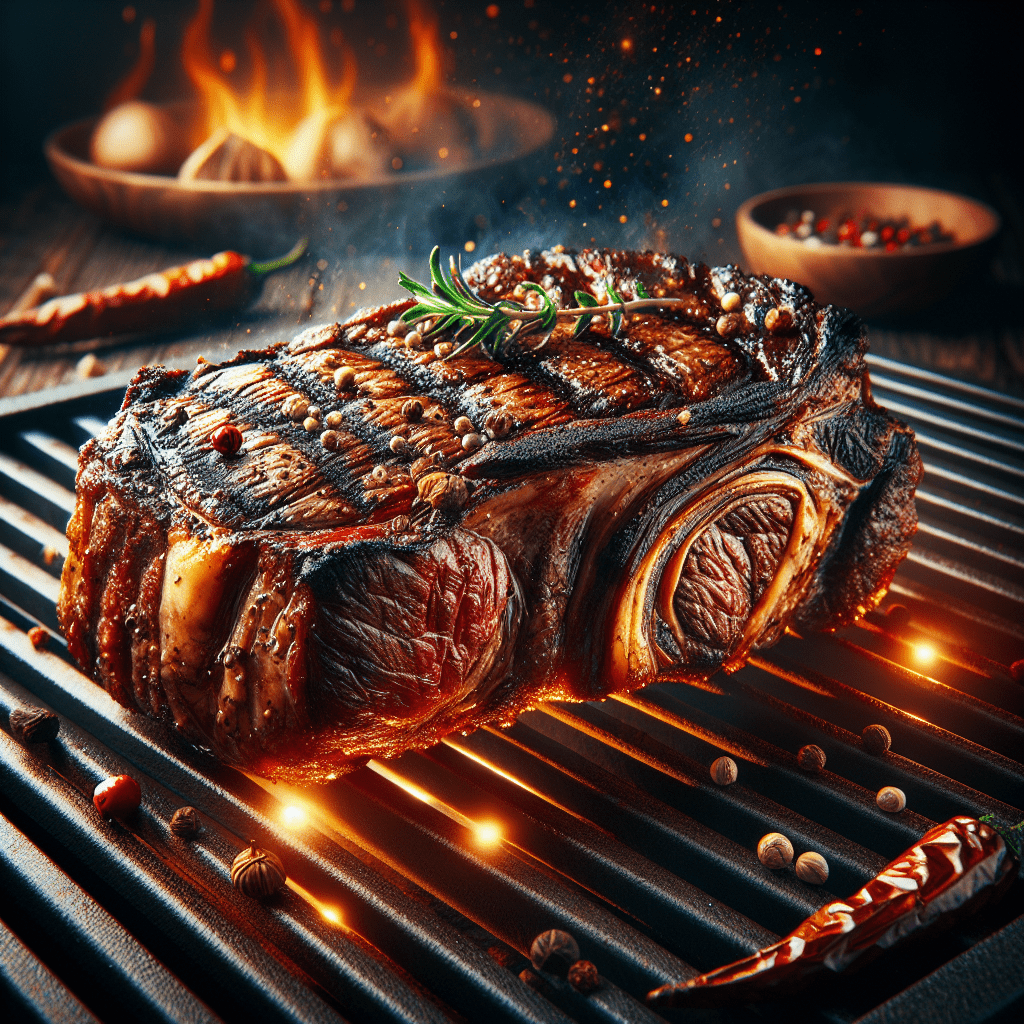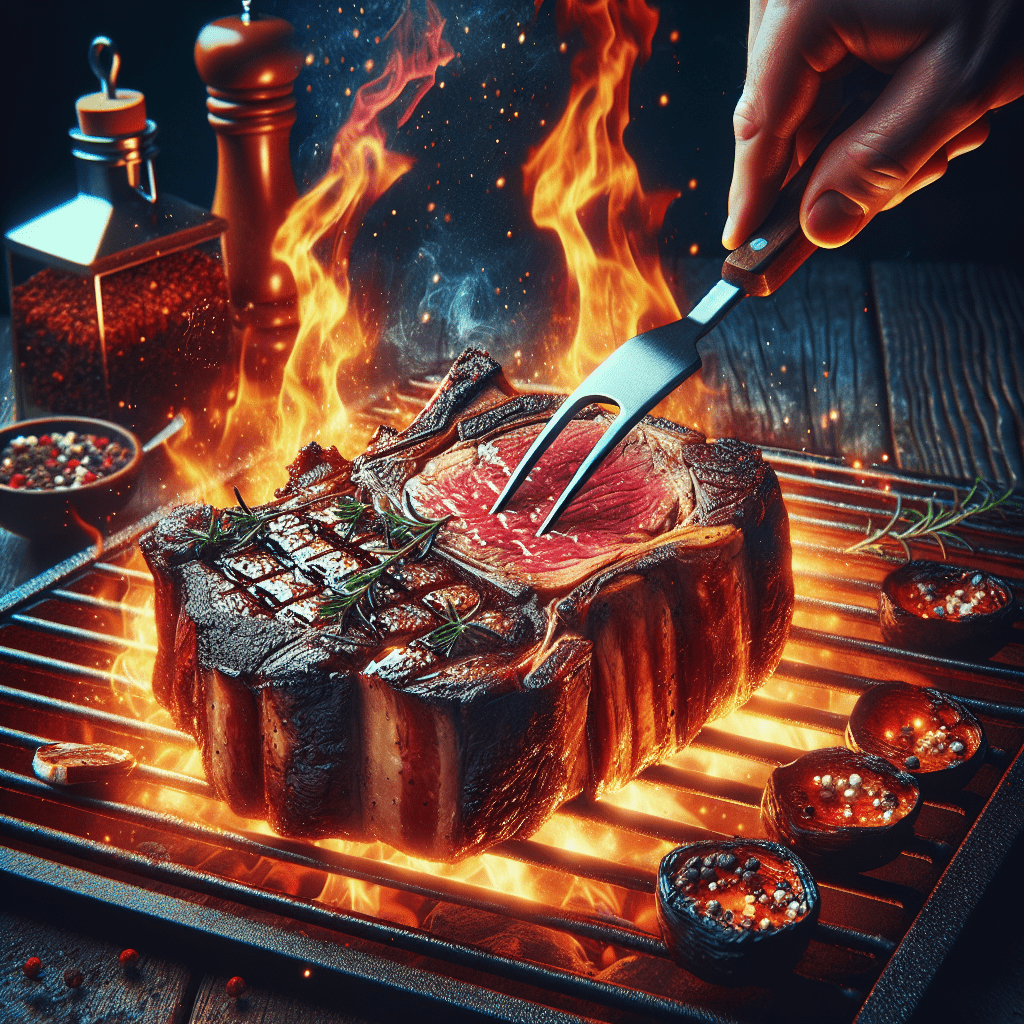Are you ready to elevate your grilling game and impress your friends and family with a delicious ribeye roast? Look no further – we’ve got you covered on how to cook a mouthwatering ribeye roast on the grill. This article will guide you through the process, from selecting the perfect cut of meat to mastering the grilling technique that will result in a tender and juicy roast. Get your apron on and fire up the grill, because your next steakhouse-worthy dish is just a few steps away.
Choosing the Right Ribeye Roast
When it comes to choosing the right ribeye roast, there are a few factors to consider. One of the most important considerations is the grade of the meat. The three primary grades of beef are prime, choice, and select. Prime grade beef is known for its exceptional marbling and tenderness, making it the top choice for a ribeye roast. Choice grade beef is also a good option, offering good marbling and tenderness at a slightly more affordable price point. Select grade beef, while still flavorful, may be leaner and require more careful cooking to maintain its juiciness.
Another factor to consider when selecting a ribeye roast is the size of the roast. The size of the roast will depend on the number of people you plan to serve and your personal preferences. A good rule of thumb is to allow for about half a pound of meat per person. If you prefer larger portions or plan to have leftovers, you may want to opt for a larger roast. Conversely, if you have a smaller gathering or prefer smaller portions, a smaller roast may be more suitable.
Lastly, you will need to consider whether to choose a bone-in or boneless ribeye roast. Both options have their advantages. A bone-in roast generally provides a richer flavor and can help retain moisture during cooking. On the other hand, a boneless roast offers ease of carving and serving. Ultimately, the choice between bone-in and boneless will come down to personal preference and convenience.
Preparing the Ribeye Roast
Once you have chosen the perfect ribeye roast, it’s time to prepare it for the grill. The first step is to trim any excess fat from the meat. While ribeye roasts are known for their marbling, excessive fat can lead to flare-ups and uneven cooking. Use a sharp knife to remove any large pieces of fat, leaving a thin layer to enhance flavor and moistness.
After trimming, it’s time to season the meat. Keep it simple by sprinkling the roast with kosher salt and freshly ground black pepper. This will enhance the natural flavors of the beef without overpowering it. For those who prefer a bit more flavor, you can also add other seasonings such as garlic powder, onion powder, or a dry rub of your choice. Just be mindful not to overwhelm the taste of the beef.
Before placing the ribeye roast on the grill, it’s essential to allow it to reach room temperature. This step helps ensure even cooking throughout the meat. Let the roast sit at room temperature for about 30 minutes before grilling. During this time, you can take the opportunity to prepare the grill.

Preparing the Grill
Choosing the right grill is crucial for cooking a perfect ribeye roast. While there are various types of grills available, a charcoal or gas grill will work equally well. However, for that authentic smoky flavor, many grill enthusiasts prefer a charcoal grill.
Before starting the grill, it’s essential to clean and oil the grates. This helps prevent the meat from sticking and ensures even cooking. Use a wire brush or grill scraper to remove any debris or residue from the grates. After cleaning, brush a light coat of cooking oil onto the grates to create a non-stick surface.
Heat management is another important aspect of preparing the grill. For direct heat cooking, place the charcoal or ignite the burners on one side of the grill. This method is ideal for searing the ribeye roast and creating a flavorful crust. Indirect heat cooking involves placing the roast on the side of the grill without any heat directly underneath it. This method allows for slower, more even cooking and is ideal for achieving the desired level of doneness.
Grilling Techniques
Searing the ribeye roast is the first step to achieving a deliciously grilled masterpiece. Begin by placing the roast directly over the hot coals or burners. Sear each side for about two to three minutes or until a golden brown crust forms. This step adds flavor and helps seal in the juices.
Once the roast is seared, it’s time to reduce the heat and continue cooking. Move the roast to the indirect heat side of the grill and cover it with the grill lid. This allows for slow and even cooking, ensuring that the roast retains its moisture and tender texture.
Throughout the cooking process, it’s essential to monitor and maintain the temperature of the grill. Aim for a grill temperature of around 325 to 350 degrees Fahrenheit. This temperature range provides optimal conditions for cooking a ribeye roast to perfection. Use a grill thermometer to keep track of the grill’s temperature and make adjustments as needed.
For ultimate accuracy, consider using a meat thermometer to determine the internal temperature of the roast. Insert the thermometer into the thickest part of the meat, away from any bones, and check the temperature. For a medium-rare level of doneness, aim for an internal temperature of around 135 degrees Fahrenheit. Medium is around 145 degrees Fahrenheit, and medium-well is around 155 degrees Fahrenheit.

Flavor Enhancements
To take your grilled ribeye roast to the next level, consider adding some flavor enhancements. One popular method is to use wood chips to infuse a smoky flavor into the meat. Soak the wood chips in water for about 30 minutes before adding them to the charcoal or a smoker box for a gas grill. This will create a fragrant smoke that imparts a delicious aroma and taste to the meat.
Basting the ribeye roast with a marinade is another way to add flavor. You can use a store-bought marinade or create your own using a combination of your favorite herbs, spices, and liquids. Baste the roast with the marinade throughout the cooking process to keep it moist and enhance the taste.
For a simple yet flavorful baste, consider creating a herb and garlic butter mixture. Combine softened butter with minced garlic, chopped fresh herbs such as rosemary, thyme, and parsley, and a pinch of salt and pepper. Spread this mixture over the roast during the last few minutes of grilling to add an extra layer of richness and flavor.
Achieving the Perfect Level of Doneness
Different individuals have varying preferences when it comes to the level of doneness in a ribeye roast. Understanding the different levels and how to achieve them is key to serving a steak that satisfies everyone’s palate.
For a rare level of doneness, aim for an internal temperature of around 125 degrees Fahrenheit. The meat will be bright red in the center and very juicy. Medium-rare, the most popular level of doneness, is achieved at around 135 degrees Fahrenheit, resulting in a rosy-pink center. Medium doneness, at around 145 degrees Fahrenheit, provides a slightly darker pink center and less juiciness. If you prefer a more well-done steak, cook the roast until it reaches an internal temperature of around 155 degrees Fahrenheit for medium-well.
To test for doneness without relying solely on temperature, you can use the finger test. Gently press the meat with your finger and compare its firmness to the firmness of your hand when making a fist. The fleshy base of your thumb represents a rare level of doneness, the base of your thumb represents medium-rare, the middle of your thumb represents medium, and the tip of your thumb represents well-done.
Once the ribeye roast reaches the desired level of doneness, it’s important to let it rest before carving. Resting allows the juices to redistribute throughout the meat, resulting in a more tender and flavorful bite. Tent the roast loosely with aluminum foil and let it rest for about 15 minutes before slicing.
Carving and Serving the Ribeye Roast
Carving a ribeye roast is a skill that requires the right tools and technique. Start by choosing a sharp carving knife with a long, thin blade. A sharp knife ensures clean, even slices without tearing the meat. Additionally, a carving fork or a sturdy pair of tongs will help hold the roast steady while slicing.
To achieve the best results, it’s essential to slice the roast against the grain. The grain refers to the direction in which the muscle fibers run within the meat. Slicing against the grain ensures that each slice is more tender and easier to chew. Identify the grain of the roast and cut perpendicular to it, creating slices that are about a quarter to a half-inch thick.
When presenting the ribeye roast on a platter, consider placing some fresh herbs or sprigs of rosemary around it for added visual appeal. This not only enhances the presentation but also adds a subtle aroma that complements the flavors of the meat.
Side Dishes that Complement Ribeye Roast
To complete your ribeye roast feast, pair it with some delicious side dishes that complement the rich flavors of the meat. Classic mashed potatoes are a popular choice, providing a creamy and buttery accompaniment to the savory roast. If you’re looking for a lighter option, consider serving grilled asparagus with a sprinkle of lemon zest. The bright, citrusy flavors of the lemon zest beautifully balance the richness of the meat. Another tasty side dish is creamed spinach with parmesan cheese. The creamy, cheesy spinach adds a touch of elegance to the meal while providing a nutritious element.
Wine Pairings with Ribeye Roast
Choosing the perfect wine to pair with your ribeye roast can elevate the dining experience to new heights. For those who love bold red wines, a cabernet sauvignon or malbec is an excellent choice. These full-bodied wines have rich flavors and tannins that complement the robust flavors of the meat.
Medium-bodied red wines such as merlot or syrah also pair well with ribeye roast. They offer a good balance between the boldness of a cabernet sauvignon and the lighter profile of a pinot noir. These wines have enough structure and complexity to stand up to the flavors of the meat without overpowering it.
If you prefer white wines or have guests who aren’t fond of reds, chardonnay or sauvignon blanc are suitable options. Chardonnay with oaky and buttery notes can provide a lovely contrast to the richness of the meat. Sauvignon blanc, on the other hand, offers a refreshing and crisp flavor profile that complements the flavors of the ribeye roast.
Leftover Ideas: Maximizing Your Ribeye Roast
If you find yourself with leftovers after enjoying your delicious ribeye roast, fear not! There are plenty of creative ways to repurpose the meat and create new, mouthwatering dishes.
One idea is to use the leftover ribeye roast to create delicious sandwiches. Slice the meat thinly and pile it onto crusty bread or rolls. Add your favorite condiments such as horseradish sauce, mustard, or mayo, along with some fresh greens or pickles for added crunch and flavor. This makes for a satisfying lunch or quick dinner option.
Another option is to use the leftover roast to make tacos or wraps. Shred the meat and warm it up in a skillet with some spices such as cumin, chili powder, and garlic. Fill tortillas or wraps with the flavorful meat, along with your choice of toppings such as avocado, salsa, cheese, and sour cream. This is a fantastic way to enjoy the ribeye roast in a whole new way.
For those looking for heartier options, consider repurposing the meat in stir-fries or beef stews. Slice the leftover roast into thin strips and stir-fry it with vegetables and your choice of sauce for a quick and flavorful meal. Alternatively, use the meat as a base for a comforting beef stew by simmering it with vegetables, broth, and herbs until it becomes tender and infused with rich flavors.
With these leftover ideas, you can make the most of your ribeye roast and enjoy it in various creative and delicious ways. Whether it’s sandwiches, tacos, or hearty stews, the options are endless.
